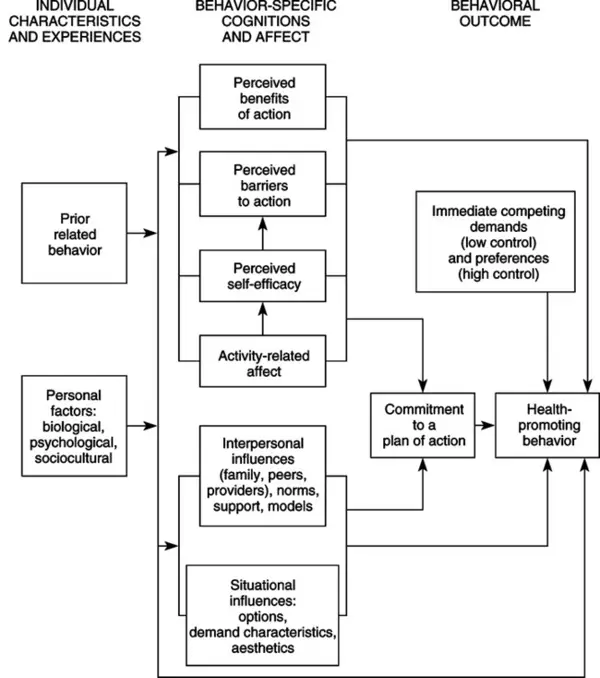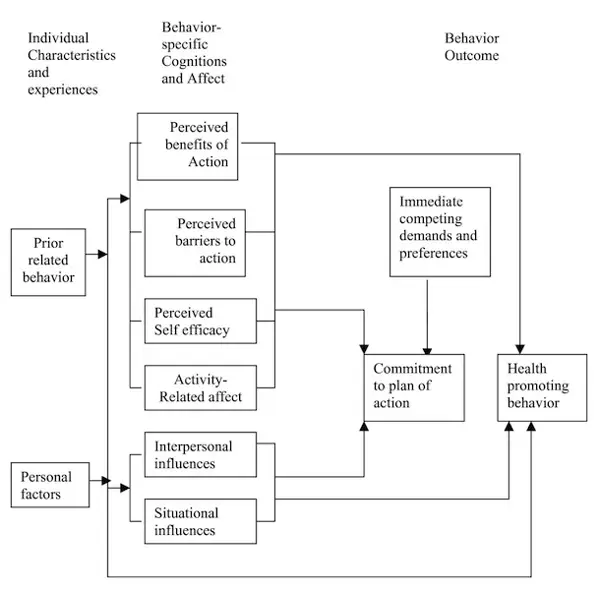Table of Contents
- Introduction
- Key Concepts
- Components of the Model
- Benefits of Health Promotion Model
- Key Takeaways
- Frequently Asked Questions
Introduction
The Health Promotion Model (HPM) is a theoretical framework developed by Dr. Nola Pender, focusing on empowering individuals to actively engage in health-promoting behaviors. This article aims to provide a comprehensive understanding of the model, its key concepts, components, benefits, and application.
Key Concepts
The HPM is built upon the following key concepts:
1. Health
Health is defined as a state of complete physical, mental, and social well-being, not merely the absence of disease or infirmity. It encompasses all aspects of a person's life and is influenced by various factors, including genetics, lifestyle choices, and environmental conditions.
2. Promotion
Promotion refers to the process of enabling individuals and communities to increase control over their health. It involves empowering people to make informed decisions and take actions that enhance their well-being. Health promotion focuses on preventing diseases and promoting healthier lifestyles through education, advocacy, and behavior change.
3. Model
A model in health promotion provides a framework or a guide for understanding and implementing effective health promotion strategies. It helps to identify key factors, relationships, and interventions that can contribute to improving health outcomes. Models serve as a reference point for policymakers, healthcare professionals, and individuals to develop and evaluate health promotion initiatives.
4. Key Concepts
In the health promotion model, several key concepts are crucial for understanding and promoting health:
- Behavioral choices: Individual decisions and actions that impact health, such as smoking, exercise, and nutrition.
- Self-efficacy: Confidence in one's ability to successfully perform specific behaviors that lead to desired health outcomes.
- Perceived benefits and barriers: Personal beliefs about the advantages and obstacles associated with adopting health-promoting behaviors.
- Interpersonal influences: The impact of social relationships, support networks, and cultural norms on health-related choices.
- Situational influences: Environmental factors, including physical, social, and economic contexts, that affect health behaviors.
- Commitment to action: The level of dedication and motivation an individual has to initiate and sustain health-promoting behaviors.
Understanding these key concepts can guide health promotion efforts and assist in designing interventions that address the underlying factors influencing health behaviors. By promoting positive changes in behavior and empowering individuals, health promotion aims to improve overall well-being and prevent the onset of diseases.

- Individual characteristics and experiences
- Behavior-specific cognitions and affect
- Behavioral outcomes
Components of the Model
The HPM consists of several interrelated components, including:
- Perceived benefits and barriers
- Self-efficacy
- Activity-related affect
- Interpersonal influences
- Situational influences
- Prior related behavior
Benefits of Health Promotion Model
The HPM offers numerous benefits for individuals and healthcare providers alike, such as:
- Enhancing individual well-being
- Encouraging self-empowerment
- Supporting preventive measures
- Improving health outcomes
Key Takeaways
After exploring the Health Promotion Model, here are the key takeaways:
- HPM empowers individuals to take control of their health.
- It emphasizes individual characteristics, cognition, and behavior.
- The model consists of several interconnected components.
- HPM offers benefits for both individuals and healthcare providers.
Frequently Asked Questions
1. How can the Health Promotion Model be applied in daily life?
The HPM can be applied in daily life by:
- Setting health goals and creating action plans.
- Identifying personal barriers and finding strategies to overcome them.
- Seeking social support and creating a supportive environment.
2. Can the Health Promotion Model be used in healthcare settings?
Absolutely! The HPM can guide healthcare professionals in developing personalized care plans, educating patients, and promoting health-enhancing behaviors.



Recent Comments